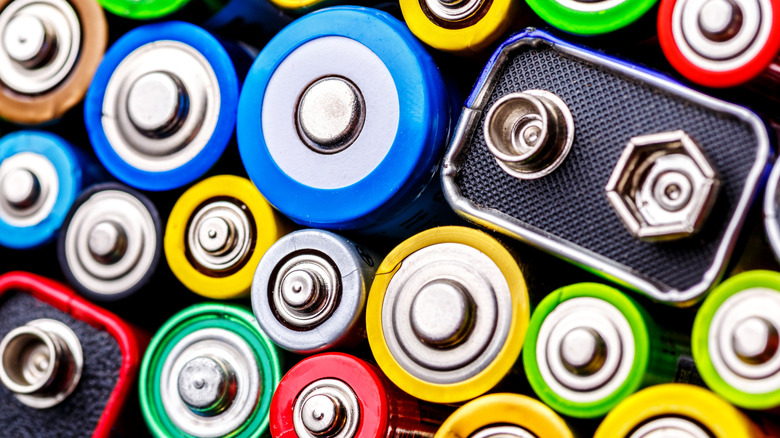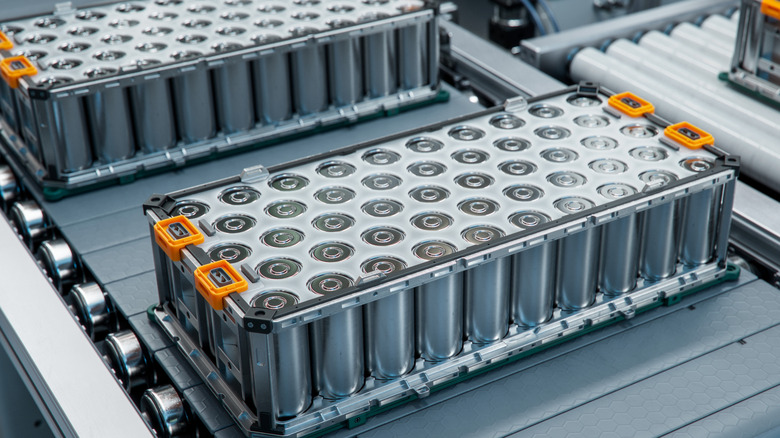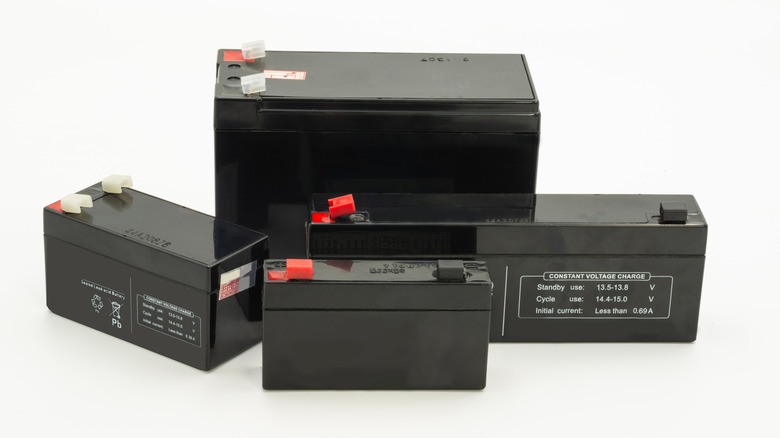Do Batteries Use AC Or DC Current? (And Why Does It Matter?)
The battery as we know it today was an invention of Italian chemist and physicist Alessandro Volta. He witnessed electricity splitting water into its constituent elements of oxygen and hydrogen and developed the theory of electrical current. He found that it was possible to chemically produce electricity and have it flow uniformly through a conductor in a closed circuit. In 1799, Volta created the first electrical battery, now known as the Voltaic pile, by using alternating copper and zinc discs, and separating the metals with flannel soaked in salt water. Modern batteries work on the same principle as the Voltaic pile, and are a DC voltage source that converts chemical energy to electrical energy.
Instead of storing electrical energy directly, a battery transforms electrical energy into chemical energy, which is then stored. This chemical energy is transformed into electrical energy as a DC current when the battery is used. Direct current, or DC, is a type of electrical current that only flows in one direction. In contrast to alternating current, or AC, which, depending on the supply's frequency, switches direction 50 or 60 times per second, the current in DC circuits flows only in one direction. The electrons, which make up the electric charge, go from the point of low potential to the point of high potential as the direct current runs. The resulting current flows in the reverse direction (from positive to negative) when they pass from the negative terminal to the positive terminal.
DC current is frequently utilized in low-voltage, low-current applications, including battery charging. Nearly all electronic devices, electric cars, automation, electrical equipment control, and more require DC. The majority of home and workplace devices, including TVs, music systems, amplifiers, computers, tablets, and smartphones, require DC power to operate.
Stable and reliable power
The reason why batteries produce DC current is because of a chemical reaction that occurs within them that naturally produces a direct, one-way flow of electrons to generate electricity. This gives the DC current from batteries several advantages over AC power, including its reliability, as it mitigates the effects of power outages and acts as a ready supply of power. DC power is efficient because it doesn't waste energy as heat, making it ideal for high-power use like heavy machinery, electric cars, and data centers.
DC current is stable, allowing it to be utilized for delicate devices like microprocessors and machine drives, where stable and predictable voltages are essential. Lastly, the scalability of DC power, meaning it can be scaled up or down, allows it to meet the specific requirements of various applications. For batteries, the primary advantages of DC current are during its charging because there is no significant energy loss, and it has higher energy efficiency when storing power.
There are, however, limitations and disadvantages in using DC current, which begin with its limited transmission distance because there are higher energy losses over long distances. Additionally, DC current requires some conversion from AC for several utility applications. DC voltage also cannot be stepped up in high-voltage transmission because a transformer doesn't work on DC current, and lastly, DC current is more expensive than AC because of the higher transmission, insulation, and generation costs.
Specific uses for each current type
Together with batteries, other power-generating devices, such as fuel cells and solar cells, produce direct current for homes and buildings. All batteries, including those found in power banks, laptops, mobile phones, and outdoor power supplies, generate direct current. A battery can be charged using alternating current from a household power outlet. In fact, many batteries are charged using a converter, which changes the alternating current input into direct current.
There are some batteries that advertise as being AC batteries, but these are converters that turn DC battery power into AC rather than actual batteries. Power grids, which provide the majority of residences' and businesses' electrical power, are among the most notable examples of DC batteries with AC converters. Because of the massive demand for electricity today, power systems are equipped with backup DC batteries. These convert direct current into alternating current, allowing DC batteries the capability to supply power to numerous locations even in the event of an interruption in the AC supply.
The use of either DC or AC current will depend on the need or application. Electric vehicles, batteries, and electrical equipment that need a steady, unidirectional flow of electricity are among the applications where DC current works well. On the other hand, AC current is utilized for some industrial applications as well as power transmission and distribution, such as supplying electricity to residences and commercial buildings. To better manage and utilize electricity, it is best to understand when and where to use AC or DC electrical current, as this can help in optimizing electricity utilization and reducing expenses.


